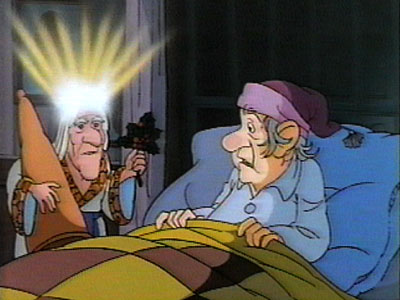
Mao's Great Leap to Famine
By FRANK DIKÖTTER
Published: December 15, 2010
HONG KONG — The worst catastrophe in China’s history, and one of the worst anywhere, was the Great Famine of 1958 to 1962, and to this day the ruling Communist Party has not fully acknowledged the degree to which it was a direct result of the forcible herding of villagers into communes under the “Great Leap Forward” that Mao Zedong launched in 1958.
To this day, the party attempts to cover up the disaster, usually by blaming the weather. Yet detailed records of the horror exist in the party’s own national and local archives.
Access to these files would have been unimaginable even 10 years ago, but a quiet revolution has been taking place over the past few years as vast troves of documents have gradually been declassified. While the most sensitive information still remains locked up, researchers are being allowed for the first time to rummage through the dark night of the Maoist era.
From 2005 to 2009, I examined hundreds of documents all over China, traveling from subtropical Guangdong to arid Gansu Province near the deserts of Inner Mongolia.
The party records were usually housed on the local party committee premises, closely guarded by soldiers. Inside were acres of dusty, yellowing paper held together in folders that could contain anything from a single scrap of paper scribbled by a party secretary decades ago to neatly typewritten minutes of secret leadership meetings.
Historians have known for some time that the Great Leap Forward resulted in one of the world’s worst famines. Demographers have used official census figures to estimate that some 20 to 30 million people died.
But inside the archives is an abundance of evidence, from the minutes of emergency committees to secret police reports and public security investigations, that show these estimates to be woefully inadequate.
In the summer of 1962, for instance, the head of the Public Security Bureau in Sichuan sent a long handwritten list of casualties to the local boss, Li Jingquan, informing him that 10.6 million people had died in his province from 1958 to 1961. In many other cases, local party committees investigated the scale of death in the immediate aftermath of the famine, leaving detailed computations of the scale of the horror.
In all, the records I studied suggest that the Great Leap Forward was responsible for at least 45 million deaths.
Between 2 and 3 million of these victims were tortured to death or summarily executed, often for the slightest infraction. People accused of not working hard enough were hung and beaten; sometimes they were bound and thrown into ponds. Punishments for the least violations included mutilation and forcing people to eat excrement.
One report dated Nov. 30, 1960, and circulated to the top leadership — most likely including Mao — tells how a man named Wang Ziyou had one of his ears chopped off, his legs tied up with iron wire and a 10-kilo stone dropped on his back before he was branded with a sizzling tool. His crime: digging up a potato.
When a boy stole a handful of grain in a Hunan village, the local boss, Xiong Dechang, forced his father to bury his son alive on the spot. The report of the investigative team sent by the provincial leadership in 1969 to interview survivors of the famine records that the man died of grief three weeks later.
Starvation was the punishment of first resort. As report after report shows, food was distributed by the spoonful according to merit and used to force people to obey the party. One inspector in Sichuan wrote that “commune members too sick to work are deprived of food. It hastens their death.”
As the catastrophe unfolded, people were forced to resort to previously unthinkable acts to survive. As the moral fabric of society unraveled, they abused one another, stole from one another and poisoned one another. Sometimes they resorted to cannibalism.
One police investigation from Feb. 25, 1960, details some 50 cases in Yaohejia village in Gansu: “Name of culprit: Yang Zhongsheng. Name of victim: Yang Ecshun. Relationship with Culprit: Younger Brother. Manner of Crime: Killed and Eaten. Reason: Livelihood Issues.”
The term “famine” tends to support the widespread view that the deaths were largely the result of half-baked and poorly executed economic programs. But the archives show that coercion, terror and violence were the foundation of the Great Leap Forward.
Mao was sent many reports about what was happening in the countryside, some of them scribbled in longhand. He knew about the horror, but pushed for even greater extractions of food.
At a secret meeting in Shanghai on March 25, 1959, he ordered the party to procure up to one-third of all the available grain — much more than ever before. The minutes of the meeting reveal a chairman insensitive to human loss: “When there is not enough to eat people starve to death. It is better to let half of the people die so that the other half can eat their fill.”
Mao’s Great Famine was not merely an isolated episode in the making of modern China. It was its turning point. The subsequent Cultural Revolution was the leader’s attempt to take revenge on the colleagues who had dared to oppose him during the Great Leap Forward.
To this day, there is little public information inside China about this dark past. Historians who are allowed to work in the party archives tend to publish their findings across the border in Hong Kong.
There is no museum, no monument, no remembrance day to honor the tens of millions of victims. Survivors, most of them in the countryside, are rarely given a voice, all too often taking their memories with them to their graves.
Frank Dikötter is a professor at the University of Hong Kong, on leave from the University of London. His books include “Mao’s Great Famine.”
